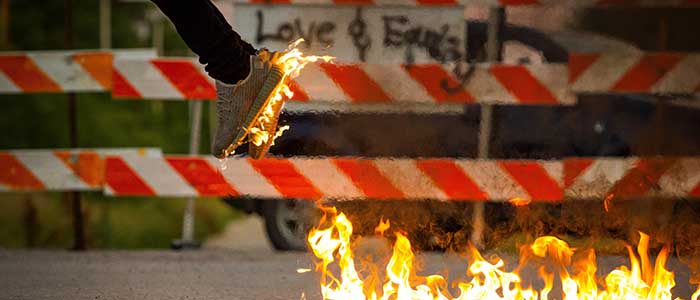Dashpivot article – Whose responsibility is it to complete the construction phase plan

Whose responsibility is it to complete the construction phase plan?
In the construction industry, the creation and maintenance of a Construction Phase Plan (CPP) are not just crucial for the smooth execution of a project but are also often mandated by law.
Understanding whose responsibility is it to complete the construction phase plan is essential for ensuring not only regulatory compliance but also the safety and success of the project.
This article delves into the various roles and responsibilities associated with the CPP in a construction project.
Learn more about Construction Phase Plans here.
Whose responsibility is it to complete the construction phase plan
Primary Responsibility: The Principal Contractor
The primary responsibility for completing the Construction Phase Plan generally lies with the principal contractor.
In the framework of regulations like the Construction (Design and Management) Regulations (CDM) 2015 in the UK, the principal contractor is explicitly tasked with developing this plan.
This responsibility stems from their role in managing the construction phase and their oversight of the construction site.
The principal contractor must ensure that the CPP is prepared before the commencement of the construction phase and that it addresses all pertinent aspects of safety, risk management, and site-specific protocols.
This role involves:
Drafting the Plan: The principal contractor is responsible for drafting the CPP, ensuring it meets all legal requirements and adequately addresses all health and safety aspects of the project.
Collaboration: While the principal contractor leads the process, collaboration with other stakeholders, such as subcontractors, designers, and clients, is crucial to ensure that the CPP is comprehensive and all-encompassing.
Updates and Revisions: As the project progresses, the principal contractor must update and revise the CPP to reflect any changes in the project scope, construction processes, or emerging risks.
Collaborative Effort: The Role of Other Stakeholders
While the principal contractor is the main point of contact in whose responsibility is it to complete the construction phase plan, the development of a CPP is often a collaborative effort.
Client’s Involvement
The client plays a critical role in providing information essential for the Construction Phase Plan. This includes details about the site, any pre-existing structures, and specific requirements or constraints of the project. The client is also responsible for ensuring that the principal contractor has made arrangements for developing the CPP.
Contributions from Designers and Contractors
Designers and other contractors contribute to the Construction Phase Plan by providing detailed plans, identifying potential hazards associated with their aspects of the work, and suggesting measures to mitigate these risks.
Consultation with Workers
Involving the workforce in the development of the Construction Phase Plan can provide valuable insights into practical safety concerns and effective risk management strategies. It also ensures that the workers are well-informed about the safety protocols and procedures outlined in the plan.
Legal and Compliance Aspects
From a legal standpoint, ensuring that the Construction Phase Plan is comprehensive and compliant with relevant safety regulations is paramount.
Failure to do so can result in severe legal implications, including fines and prosecution, particularly if non-compliance leads to accidents or safety breaches.
The principal contractor, therefore, must ensure that the CPP adheres to all legal requirements and industry standards.
Updating and Maintaining the Construction Phase Plan
The responsibility of the principal contractor extends beyond just creating the Construction Phase Plan.
They must also ensure that it is a living document, updated as the project evolves or when there are significant changes in the work, workforce, or risk assessments.
Regular reviews and updates are essential to maintain the relevance and effectiveness of the plan throughout the construction phase.
If you're asking whose responsibility is it to complete the construction phase plan and the answer is you, you can follow the Construction Phase Plan provided below to give you an example of what you need to do.

Use and customise this free digital Construction Phase Plan template
Standardise your digital Construction Phase Plan
Record CPPs quickly, easily and comprehensively by using this digital Construction Phase Plan template.
The CPP document comes pre-built with fields and sections to capture the project details, scope of work, roles, responsibilities, working together and how to organise work.
Customise the Construction Phase Plan format with any extra fields or sections you need, whether it's simple text fields, dates, tables, required fields, checkboxes or more, with the drag and drop form builder.
Attach any other relevant documents you need directly to your Construction Phase Plan for easy reference.
Build digital processes for Construction Phase Plans to keep stakeholders engaged and updated
There are a lot more responsibilities around Construction Phase Plans than just creating it then patting yourself on the back.
You need to keep it updated with new information that's coming in from the client and your team, with work being done, the next stages of the construction project, the list keeps going.
You also have to keep your team informed of these changes so they can continue working safely and compliantly.
This digital construction phase plan app can help manage those responsibilities and automate different steps to keep you on top of things.
Keep track of subcontractors, permits & licences, insurances, maintenance and more using Lists, with notifications if a licence/permit/anything else will be expired soon or has already expired.
Share your CPPs in the app in a single click as professionally formatted CSVs or PDF to keep your internal team informed with the latest version or to external 3rd parties in case of an audit.

Near Miss Reporting template
Keep site safer by making your near miss reporting procedure safe and streamlined.

Site diary template
Complete and organise your daily diaries more efficiently.

Risk Register template
A general risk register template you can use for documenting any type of project risk.


